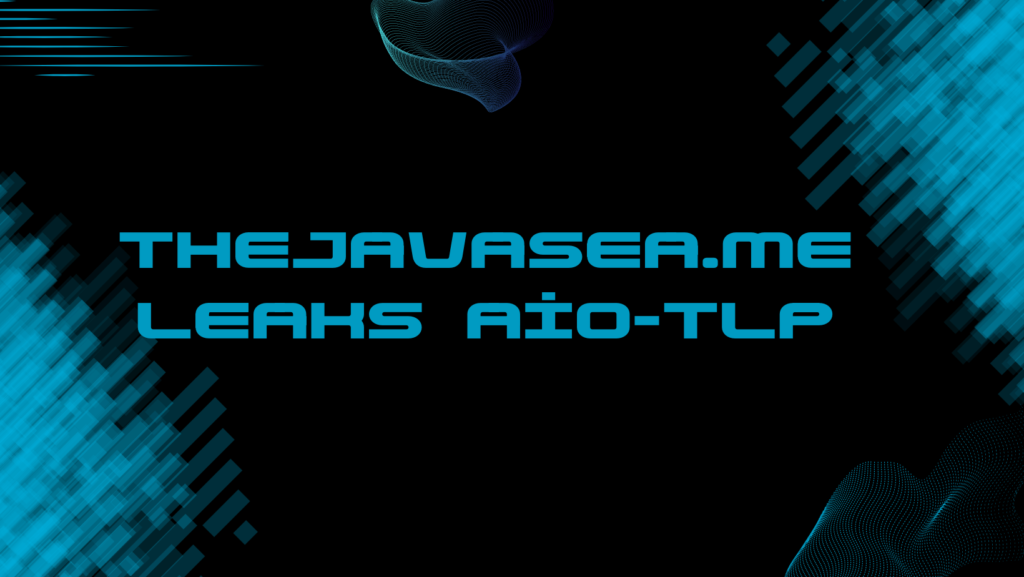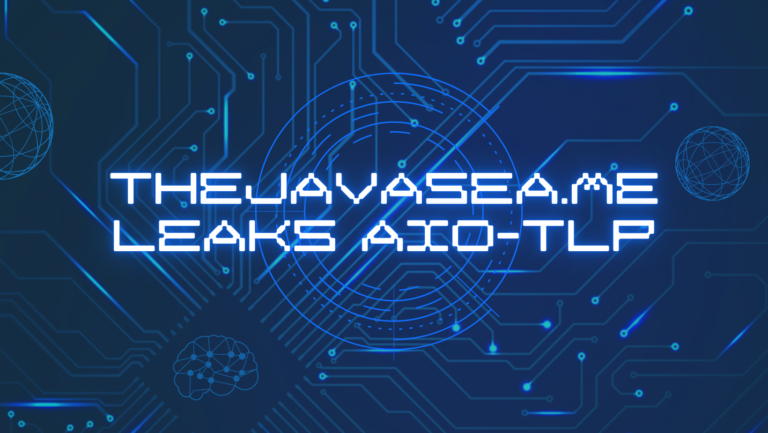Introduction to AIO-TLP
In the ever-evolving digital technology landscape, leaks and data breaches are becoming increasingly common. Among these, TheJavaSea.me leaks AIO-TLP have garnered significant attention. AIO-TLP, short for All-In-One Tool Leak Platform, represents a sophisticated system where various digital tools and resources are shared, often illicitly, bypassing conventional distribution and licensing norms. Understanding these leaks’ intricacies is crucial for cybersecurity professionals and the general public to safeguard against potential threats. This guide aims to explore TheJavaSea. I leak AIO-TLP, covering its origins, implications, and preventive measures.
The Origin of TheJavaSea.me
TheJavaSea.me is a website known for distributing various software tools, plugins, and other digital resources. Initially, it started as a platform for developers and tech enthusiasts to share and discuss multiple programming-related topics. However, it has become a hub for leaking proprietary software and tools. The AIO-TLP leaks from TheJavaSea. I have mainly stood out due to their comprehensive nature, encompassing a broad spectrum of digital utilities, from development tools to security software.
Understanding AIO-TLP
AIO-TLP stands for All-In-One Tool Leak Platform, a collection of tools and software often bundled together and made available through illicit means. These bundles typically include cracked software versions, unauthorized plugins, and other digital resources. The appeal of AIO-TLP lies in its convenience, offering users a one-stop solution for obtaining multiple tools without needing individual licenses. However, this convenience comes at the cost of legality and security.

Components of AIO-TLP
The components of AIO-TLP can vary widely, but they generally include:
- Development Tools: Integrated Development Environments (IDEs), code editors, and other programming utilities.
- Security Software: Antivirus programs, firewalls, and other cybersecurity tools.
- Productivity Suites: Office software, project management tools, and collaboration platforms.
- Creative Software: Graphic design tools, video editing software, and audio production utilities.
These components are often modified to bypass licensing mechanisms, allowing users to access premium features without payment. While this may seem advantageous, it opens the door to significant risks.
The Risks Associated with TheJavaSea. I Leaks AIO-TLP.
Using leaked software from platforms like TheJavaSea.me poses numerous risks. These risks can affect individual users, organizations, and even national security. Understanding these dangers is critical for making informed decisions about software use and cybersecurity practices.
Legal Implications
One of the most immediate risks is legal liability. Distributing and using cracked or pirated software is illegal in most jurisdictions. This can lead to severe penalties, including fines and imprisonment. Companies caught using such software may face lawsuits and significant reputational damage, which can be far more costly than the price of legitimate licenses.
Security Vulnerabilities
Leaked software often comes with hidden security vulnerabilities. Hackers can embed malware, spyware, or other malicious code within these tools, which can then be used to steal personal information, financial data, or corporate secrets. Such compromised software can lead to widespread data breaches with potentially devastating consequences.
Reliability and Functionality Issues
Software obtained through AIO-TLP platforms may not function as reliably as legitimate versions. Cracked software often lacks updates and support from the original developers, leading to bugs, crashes, and compatibility issues. This can significantly hinder productivity and lead to data loss or corruption.
Ethical Considerations
Using leaked software raises ethical questions. It undermines the efforts of software developers and companies who invest significant resources in creating and maintaining their products. By supporting the distribution of pirated software, users contribute to a cycle that devalues intellectual property and innovation.
Preventive Measures and Best Practices
Given the risks associated with TheJavaSea.me leaks AIO-TLP, adopting preventive measures and best practices to safeguard against these threats is crucial. Here are some strategies to consider:
Opt for Legitimate Software
Using legitimate versions is the most effective way to avoid the risks of leaked software. Purchase licenses from authorized distributors and use discounts, open-source alternatives, or free versions from reputable companies. This ensures you receive regular updates, support, and legal protection.
Implement Robust Cybersecurity Measures
Investing in robust cybersecurity measures can help protect against threats posed by leaked software. This includes installing reputable antivirus programs, using firewalls, and regularly updating all software to patch vulnerabilities. Additionally, implementing strong password policies and educating employees about phishing attacks and other social engineering tactics can enhance security.
Regular Audits and Compliance Checks
Regular audits and compliance checks can help identify and eliminate unauthorized software within your organization. This can prevent potential legal and security issues before they escalate. Use software asset management tools to track and manage licenses effectively.
Promote Ethical Practices
Fostering a culture of ethical behavior within your organization is essential. Encourage employees to respect intellectual property rights and understand the implications of using pirated software. Providing training and resources on the importance of cybersecurity and ethical practices can help build a responsible and vigilant workforce.
The Future of TheJavaSea.me and AIO-TLP
The future of TheJavaSea.me and similar platforms remains uncertain. The battle against software piracy and leaks will continue as cybersecurity measures and legal frameworks evolve. Increased cooperation between technology companies, law enforcement agencies, and cybersecurity professionals will be crucial in combating these issues.
Technological Advancements
Advancements in technology, such as artificial intelligence and machine learning, are likely to play a significant role in detecting and preventing software piracy. These technologies can help identify patterns and anomalies associated with leaked software distribution, allowing for more effective enforcement and mitigation strategies.
Legal and Regulatory Changes
Governments and regulatory bodies worldwide are continuously working to strengthen laws and regulations related to intellectual property and cybersecurity. Stricter penalties and enhanced enforcement mechanisms can deter software piracy and leaks.

Community and Industry Collaboration
Collaboration within the tech community and industry is vital. Sharing information about threats, vulnerabilities, and best practices can help create a united front against software piracy. Industry associations and organizations can also play a key role in raising awareness and advocating for stronger protections.
Conclusion
TheJavaSea.me leaks AIO-TLP represent a significant challenge in digital security and intellectual property rights. While the convenience of accessing a wide range of tools through AIO-TLP platforms may be tempting, the associated risks far outweigh the benefits. Legal liabilities, security vulnerabilities, reliability issues, and ethical concerns make it imperative for individuals and organizations to prioritize legitimate software use.
By adopting preventive measures, implementing robust cybersecurity practices, and fostering a culture of ethical behavior, we can mitigate the threats posed by leaked software. As technology and legal frameworks continue to evolve, action and vigilance will be essential in safeguarding against the dangers of TheJavaSea. I leak AIOleakand similar platforms.


